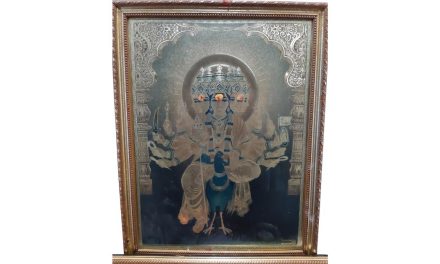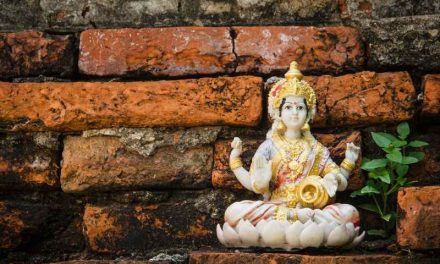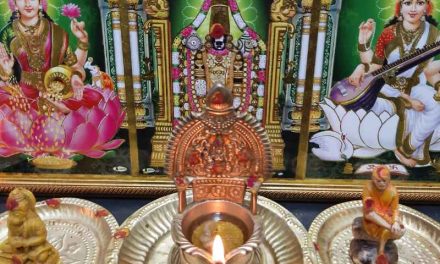The Chandogya Upanishad is one of the oldest and most influential Upanishads, the ancient Hindu scriptures that reveal the highest wisdom and knowledge. The Upanishads are the end part of the Vedas, the four collections of hymns and rituals that constitute the foundation of Hinduism. The Chandogya Upanishad belongs to the Sama Veda, which is mainly focused on the musical aspects of the Vedic chants.
The Chandogya Upanishad consists of eight chapters, each divided into several sections. The text covers a wide range of topics, such as the nature of Brahman (the supreme reality), the identity of Atman (the individual soul) with Brahman, the theory of reincarnation and karma, the methods and benefits of meditation, the ethical and social duties of a human being, and the various stages of spiritual development.
In this blog post, we will explore some of the main themes and teachings of the Chandogya Upanishad, and how they can inspire us to live a more meaningful and fulfilling life.
The Story of Svetaketu
One of the most famous stories in the Chandogya Upanishad is that of Svetaketu, a young Brahmin who returns home after studying the Vedas for twelve years. His father, Uddalaka, notices that his son is arrogant and ignorant of the true essence of Hinduism. He decides to teach him a series of lessons that reveal the ultimate truth of existence.
Uddalaka uses various examples from nature, such as clay, gold, iron, seeds, salt, water, honey, etc., to illustrate that everything in the world is made of one substance, which he calls “the subtle essence”. He then explains that this subtle essence is nothing but Brahman, the source and sustainer of all things. He further reveals that this Brahman is identical to Atman, the innermost self of every being. He summarizes this profound teaching by saying: “Tat tvam asi” (You are That).
This story shows us that we are not separate from the rest of creation, but rather connected to it by a common essence. It also shows us that we are not limited by our physical bodies or our mental identities, but rather possess a divine nature that transcends all limitations. It invites us to realize our true self as Brahman, and to experience the bliss and freedom that comes from this realization.
The Meditation on Om
Another important theme in the Chandogya Upanishad is the meditation on Om, the sacred syllable that represents Brahman. The text describes how Om is composed of three sounds: A, U, and M, which correspond to three states of consciousness: waking, dreaming, and deep sleep. It also explains how Om encompasses all words and meanings, all sounds and silence, all past and future.
The text instructs us to meditate on Om as a means of attaining Brahman. It says: “One who knows Om, knows everything”. It also says: “One who meditates on Om with full awareness becomes one with Brahman”. It promises that such a meditator will attain peace, happiness, immortality, and liberation from the cycle of birth and death.
This theme teaches us that Om is not just a word or a sound, but a symbol of the highest reality. It teaches us that by chanting or listening to Om with devotion and concentration, we can tune into the vibration of Brahman within ourselves and in everything around us. It teaches us that by meditating on Om with full awareness, we can transcend our ordinary state of consciousness and merge with our true self.
The Dialogue between Prajapati and Indra
A third notable story in the Chandogya Upanishad is that of Prajapati (the creator god) and Indra (the king of gods), who engage in a dialogue about the nature of Atman. Prajapati initially offers a series of definitions of Atman that are based on external appearances or superficial aspects. For example, he says that Atman is the reflection in a mirror, or the shadow on water, or the person seen in a dream.
Indra accepts these definitions at first but soon realizes that they are inadequate or contradictory. He returns to Prajapati several times to seek clarification or correction. Prajapati gradually refines his definitions until he finally reveals that Atman is beyond all forms and attributes, beyond all senses and mind, beyond all birth and death. He says: “It is pure consciousness alone”.
This story illustrates how our understanding of Atman evolves through inquiry and reflection. It illustrates how we often mistake our Atman for our body, our senses, our mind, or our ego. It illustrates how we need to go beyond these false identifications and discover our true nature as pure consciousness. It illustrates how this discovery requires patience, perseverance, and humility.
Conclusion
The Chandogya Upanishad is a rich and profound text that offers us many insights and guidance on how to live a spiritual life. It teaches us that we are not separate from Brahman, but rather one with it. It teaches us that we are not limited by our physical or mental conditions, but rather possess a divine potential. It teaches us that we can realize this potential by meditating on Om, by inquiring into our true self, and by following the path of dharma (righteousness).
The Chandogya Upanishad is not just an ancient text of Sama Veda, but a living source of wisdom and inspiration for all seekers of truth and happiness. It invites us to explore its teachings and apply them to our own lives. It invites us to become one with Brahman, and to experience the joy and peace that comes from this union.
Works Cited:
(1) 2.3: Chandogya Upanishad – Humanities LibreTexts. https://human.libretexts.org/Bookshelves/Religious_Studies/Scriptures_of_the_Worlds_Religions_%28Burke%29/02%3A_Hindu_Scriptures/2.03%3A_Chandogya_Upanishad
(2) Chandogya Upanishad (english Translation) – Wisdom Library. https://www.wisdomlib.org/hinduism/book/chandogya-upanishad-english
(3) Chandogya Upanishad – Wikipedia. https://en.wikipedia.org/wiki/Chandogya_Upanishad
(4) [Solved] chandogya upanishad is an Upanishad of which Veda? – Testbook.com. https://testbook.com/question-answer/chandogya-upanishad-is-an-upanishad-of-which-veda–630237ed4cf1e444837896ad
(5) Chandogya Upanishad – Dharmapedia Wiki. https://en.dharmapedia.net/wiki/Chandogya_Upanishad





